| Warp 1/72 Space 1999 Eagle |
| |
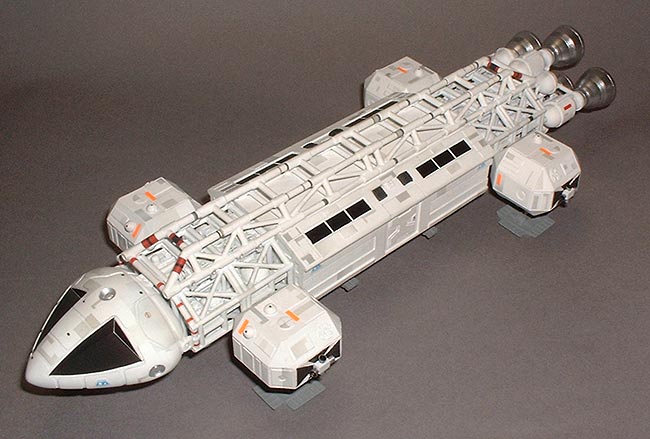 |
|
If I had to choose my all time favourite sci-fi spacecraft,
and I can't imagine ever being forced at gunpoint to divulge such trivial
information, but if I were, the choice would be easy. It would be, without
a doubt, the Eagle from Space 1999. You can keep your Flash Gordon tin toy
spaceships, Enterprises, Death Stars, and shiny hubcaps dangling on strings.
To me, the Eagle was the Coupe de Ville of futuristic off-world transportation.
Take one Sikorsky Skycrane, blend in a healthy dose of lunar module, add
a dash of Harrier and you've got an Eagle; plausibly functional and versatile
but smacking of über-coolness.
Lasting just two seasons from 1975-76, Gerry Anderson's second live action
outing was a must-see program for an impressionable wee lad such as myself.
I was too young to catch any of the "Super Marionation" shows
he was so well known for in the sixties and I couldn't get into them in
later years; the puppets were just too silly and the models too toy-like
for me. I vaguely recall watching episodes of "UFO" in the early
seventies, but I was too young to understand or fully appreciate them (especially
the fuchsia haired Lt. Gay Ellis in that skin tight sparkly suit), though
I did find the alien antagonists to be mildly frightening and I loved the
sound the UFOs made. When Space 1999 hit the screen I was hooked right from
the second that funky first season opening music hit my ears. With its fantastic
crash scenes, cheesy costumes and often dodgy plotlines, I loved every minute
of it. |
| |
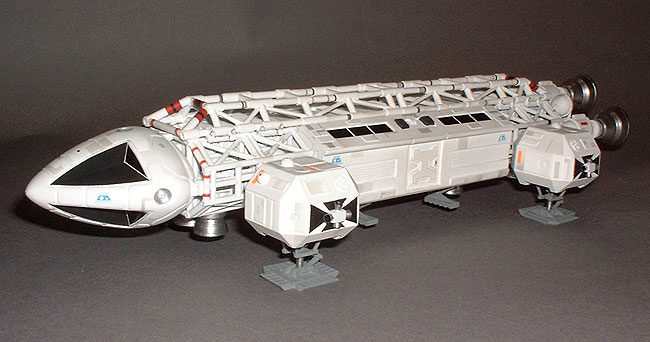 |
|
| I splurged on this kit 6 years ago as a 40th birthday present
for myself. At the princely sum of £60.00 it was, at the time, the
most money I had ever spent on a single kit. After all, you only turn 40
once so you may as well make it an even more depressing event by spending
a big chunk of cash on a kit that turns out to be about as much fun as a
trip to an abattoir with a troop of necrophobic vegetarians. |
| |
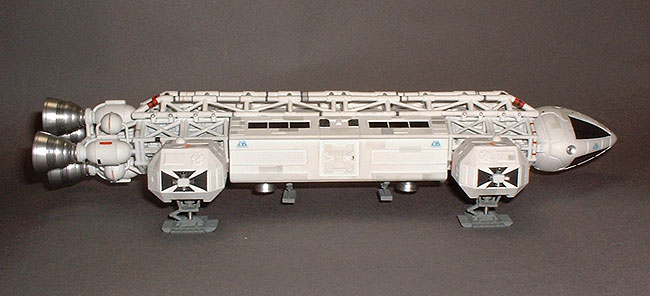 |
|
The kit consists of white metal and resin parts varying in
quality from "mildly concerning" to "run screaming in horror".
There is a great build up of this kit by E. James Small on Starship
Modeler and I strongly recommend to anyone considering building
a Warp Eagle to read the article and heed his advice, especially regarding
the brittle nature of the resin. I thought he may be prone to exaggeration
as I found it difficult to believe his model actually collapsed under its
own weight, however after I snapped one of the pod mounts off with little
more pressure than it takes to fold a piece of paper, I decided I would
take his words of wisdom seriously.
I also highly recommend reading David Sisson's article on his restoration
of an original studio model in the Volume 9 issue of Sci-fi
& Fantasy Modeller and also on his own website.
I followed a lot of his painting guides for the panelling detail in various
shades of grey. |
| |
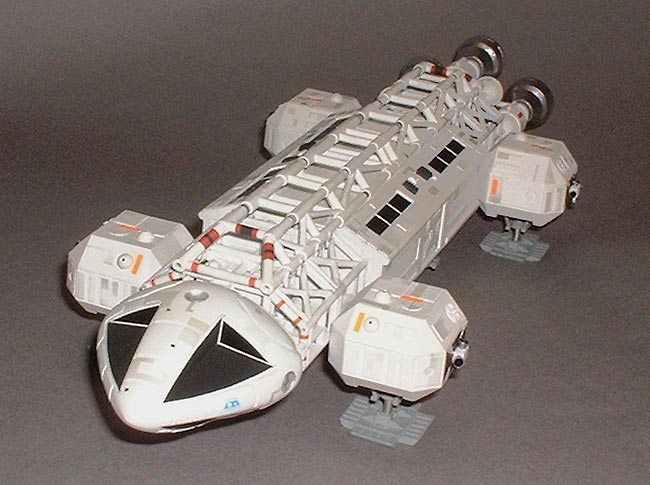 |
|
| I worked on the model on and off for 6 years with it spending
protracted periods of time out of sight under the workbench, for its own
protection as well as that of my sanity. As I progressed in the build however
it became obvious that whoever made the masters did a superb job. Sadly
the same cannot be said for whoever made the moulds and did the casting.
The resin parts were full of pits, bubbles, wrinkles and general nastiness
and the white metal had all the same features but with the added bonus of
copious quantities of flash. In many instances there was more flash than
part (see construction
page for pics - not for the faint hearted!). |
| |
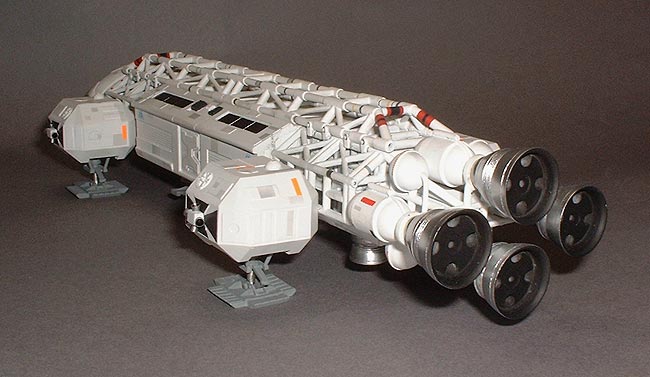 |
|
The main engines and, to a lesser extent, the lift engines
underneath, took a lot of time and effort to get them looking anywhere near
reasonable. Two of the main engines were cast in a dark green resin and
two in a poor quality tan coloured resin, the same horrible stuff that was
used on the pods. This material was particularly awful and appeared to be
prone to shrinking, pitting and wrinkling in addition to the fragile nature
noted earlier. The lift engines were cast in both types of resin along with
a third pale grey resin which was somewhere in between the two quality-wise.
Clean up started by using a scriber to remove the blobs of resin in the
grooves and any pits were carefully filled with small amounts of a cyano/talcum
powder mix. This was tidied up with the edge of a fine file when dry. The
engines were primed with Mr. Surfacer then turned against 400 grit sandpaper
used wet to smooth the surface. This process had to be repeated countless
numbers of times before I was happy with the finish. The four openings in
the rear of each engine bell were cast solid so these were drilled out for
a bit more depth. When I figured I just couldn't get them any better a coat
of gloss black was sprayed on with the final finish being Alclad Polished
Aluminium. The combustion areas were sprayed Humbrol Matt Black. Careful
consideration was given to placement of the engines so that the best sides
faced outwards! |
| |
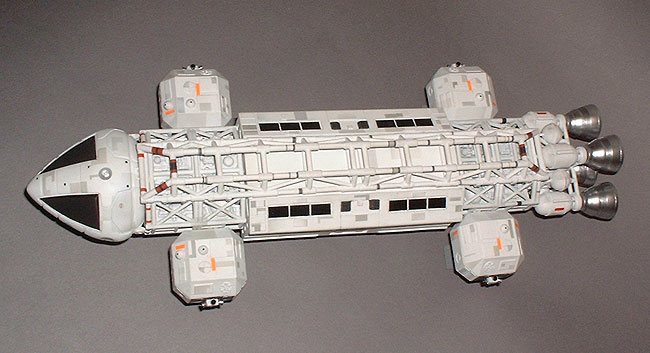 |
|
| It may surprise you to learn I actually would build another
of these and I am giving serious consideration to the Eagle with the extended
laboratory pod or perhaps the freighter version. Maybe when I hit the big
five-oh I'll splurge on another one and have it finished before I reach
retirement age. If the bastard government ever lets me retire that is.... |
| |
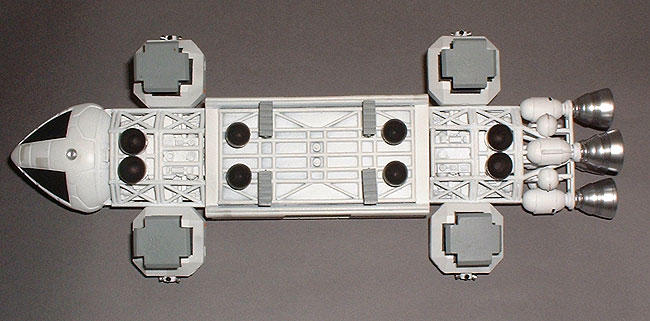 |
|
| |
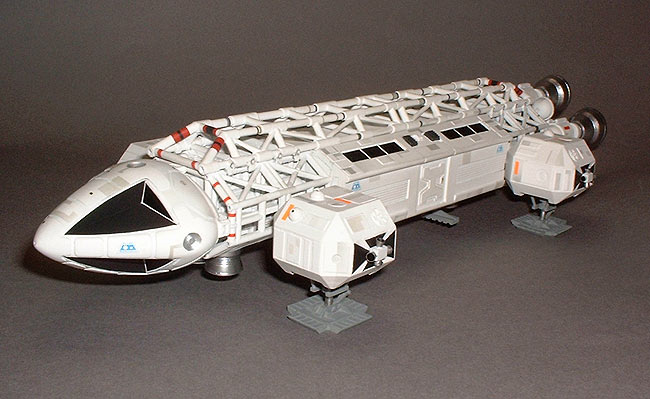 |
|
| |
|
| |







